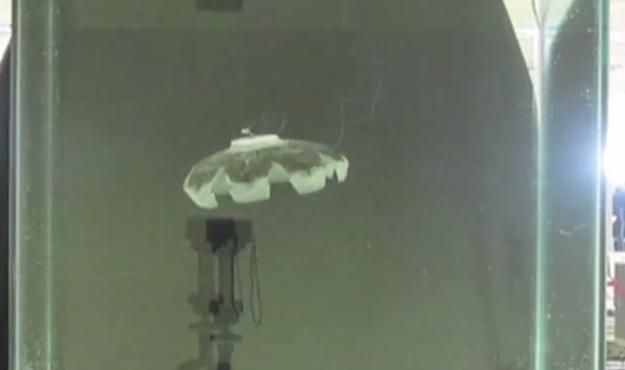Please note: Osher Rainforest will be closed for maintenance Jan. 14–16.
Science News
Robojelly
March 21, 2012

When you think of robots, you think of cool, macho Transformer types, right? Well, not any more. Meet Robojelly, the first robot fashioned after jellies.
Constructed from a set of smart materials—which have the ability to change shape or size as a result of a stimulus—and carbon nanotubes, Robojelly is able to mimic the natural movements of a jellyfish.
The jellyfish is an ideal invertebrate to inspire vehicle design due to its simple swimming action: it has two prominent mechanisms known as "rowing" and "jetting."
A jelly's movement is dependent upon circular muscles located on the inside of the bell– the main part of the body, shaped like the top of an umbrella. As the muscles contract, the bell closes in on itself and ejects water to propel the jellyfish forward. After contracting, the bell relaxes and regains its original shape.
Robojelly is powered by heat-producing chemical reactions between the oxygen and hydrogen in water and the platinum on its surface. The heat given off by these reactions is transferred to the artificial muscles of the robot, causing them to transform into different shapes.
This green, renewable element means Robojelly can regenerate fuel from its natural surroundings and therefore doesn't require an external power source or the constant replacement of batteries.
The researchers see Robojelly’s future in underwater search and rescue operations. The technology is published in today in Smart Materials and Structures.